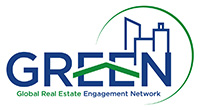Energy Efficiency Laws in Real Estate: Regional Discrepancies but Inevitable Adoption
As the European Union strides towards its ambitious net-zero emissions target by 2050, energy efficiency laws have become a cornerstone of its environmental policy. While crucial for reducing overall carbon emissions, these regulations present challenges and opportunities for asset managers and building owners. With the EU’s sweeping reforms juxtaposed against stringent U.S. mandates like the Local Law 97 in New York and recent SEC disclosures, a comparative analysis highlights diverse strategies and the complex compliance landscape.
Dongxiao Niu, Post-doc Researcher at the School of Business and Economics, Maastricht University, outlines the contrasting regulatory landscapes in the US and Europe and discusses their common inevitable outcomes.
The European Union’s Perspective: Strong Policies, Strong Support
The EU’s energy efficiency directives are designed to drastically reduce energy consumption in buildings, responsible for approximately 40% of the EU’s energy usage. The policies mandate significant improvements in new and existing buildings to enhance energy performance, like the Label C policy for office buildings in the Netherlands in 2018. While the goal is clear, balancing the stringent requirements of these laws with the practical aspects of their implementation requires a careful consideration of financial and operational realities. Recognising these financial hurdles, the EU has facilitated various financing avenues, such as the European Structural and Investment Funds (ESIF) and the European Local Energy Assistance (ELENA). These programs provide substantial financial aid and grants to innovate and implement energy-efficient technologies.
U.S. Regulations: Immediate Compliance and Disclosure
The United States has adopted a somewhat different approach, characterised by more direct enforcement mechanisms. A prime example is New York City’s Local Law 97, part of the Climate Mobilization Act passed in 2019. This law is notably one of the most ambitious legal frameworks in the U.S. for reducing greenhouse gas emissions. Requiring buildings over 25,000 square feet to meet strict greenhouse gas emissions limits starting in 2024, with more stringent limits set for 2030 and beyond, the law affects about 50,000 buildings across the city, collectively accounting for roughly 30% of New York’s total emissions. Unlike the EU’s broader financial and advisory support strategy, Local Law 97 imposes penalties for non-compliance, with fines based on the degree to which buildings exceed their carbon emission limits. New York City offers advisory services, financing options, and grants for retrofitting and green upgrades to aid buildings in compliance. Programmes like the NYC Accelerator guide building owners on effectively implementing energy-saving measures.
While regulatory stringency varies widely across states, increasing energy-related regulations in pioneering states like New York, Massachusetts, and California indicates a shift from voluntary to mandatory green building practices. More states are expected to adopt these mandatory standards. Although there will inevitably be early and late adopters, current trends suggest that stricter regulations are gaining traction. Asset managers will need to consider strategies for enhancing their assets’ environmental sustainability and resilience.
Comparative Insights: Enforcement and Economic Impact
While the EU focuses on long-term goals with substantial support mechanisms, it needs more stringent immediate enforcement measures. This softer approach might delay effective implementation as the compliance incentives depend primarily on market conditions and voluntary adherence. By buffering upfront costs through financial aid, the EU helps asset managers and building owners absorb the financial impact over a more extended period, potentially reducing the economic shock of transitioning to greener operations. In contrast, the U.S. model does not hesitate to impose penalties. Such measures ensure rapid compliance but can impose significant financial burdens on property managers unprepared for swift transitions.
Regulations Offer a Crucial Adaptation Period for Strategic Planning and Upgrades
For asset managers, the regulations have not appeared overnight but have been discussed for a long time. Typically, managers have 5-10 years to align with the new standards. This period is crucial for planning, securing funding, and executing the necessary modifications to their properties. Strategic planning is vital as managers must assess their portfolios, determine the scope of required renovations, and plan these upgrades within the stipulated timelines.
One point that asset managers often overlook is that investing in green renovations is not just about compliance but also about seizing economic opportunities. Renovated buildings, or green buildings, have been shown to command higher rents and property values due to their reduced operational costs and appeal to environmentally conscious tenants and buyers. Of course, it takes time to realise a return on the initial investment and financial incentives are important in the early stages of green building implementation. However, asset managers should consider these long-term financial benefits when evaluating the viability of energy efficiency projects rather than only focusing on the short-term upfront costs. Although the EU doesn’t fine non-compliers, lagging in the de-carbonisation race could lead to competitive disadvantages and possible devaluation.
Imminent Energy Efficiency Laws Demand Immediate Preparatory Actions by Asset Managers
As the EU and the U.S. continue refining their regulatory approaches, the contrasts offer valuable lessons on the effectiveness of different strategies. The EU may benefit from incorporating more direct enforcement mechanisms to ensure compliance, while the U.S. can look at financial support systems to help ease the transition for asset managers. Both regions are making significant strides toward a sustainable future, but their path involves a delicate balance of regulation, economic considerations, and ongoing support for the stakeholders involved. Asset managers have time to adjust, and with the right strategies, they can turn regulatory compliance into profitable investment opportunities.
Even though mandatory energy efficiency laws may not be introduced for a few more years, especially in the regions with less market demand and less environmentally aware regulators, asset managers and investors should prepare for the transition. Managers with portfolios subject to multiple regulatory frameworks should prioritize this in particular. The trend is moving towards more comprehensive disclosure, encompassing energy efficiency, climate risks, and impacts, including biodiversity and social risks.
Call upon other investors to collaborate to achieve real-world impact
GREEN is a not-for-profit collaborative engagement initiative for institutional investors, focusing on reducing climate risk in the real estate industry. GREEN members acknowledge the importance of collaboration to initiate change and maximize impact. We, therefore, call upon other institutional investors to join GREEN and work together towards a Paris-aligned real estate sector. Check the investor statement for more information.
Disclaimer
The views presented in this article reflect the views of the GREEN Secretariat but do not necessarily represent those of the individual GREEN members.






